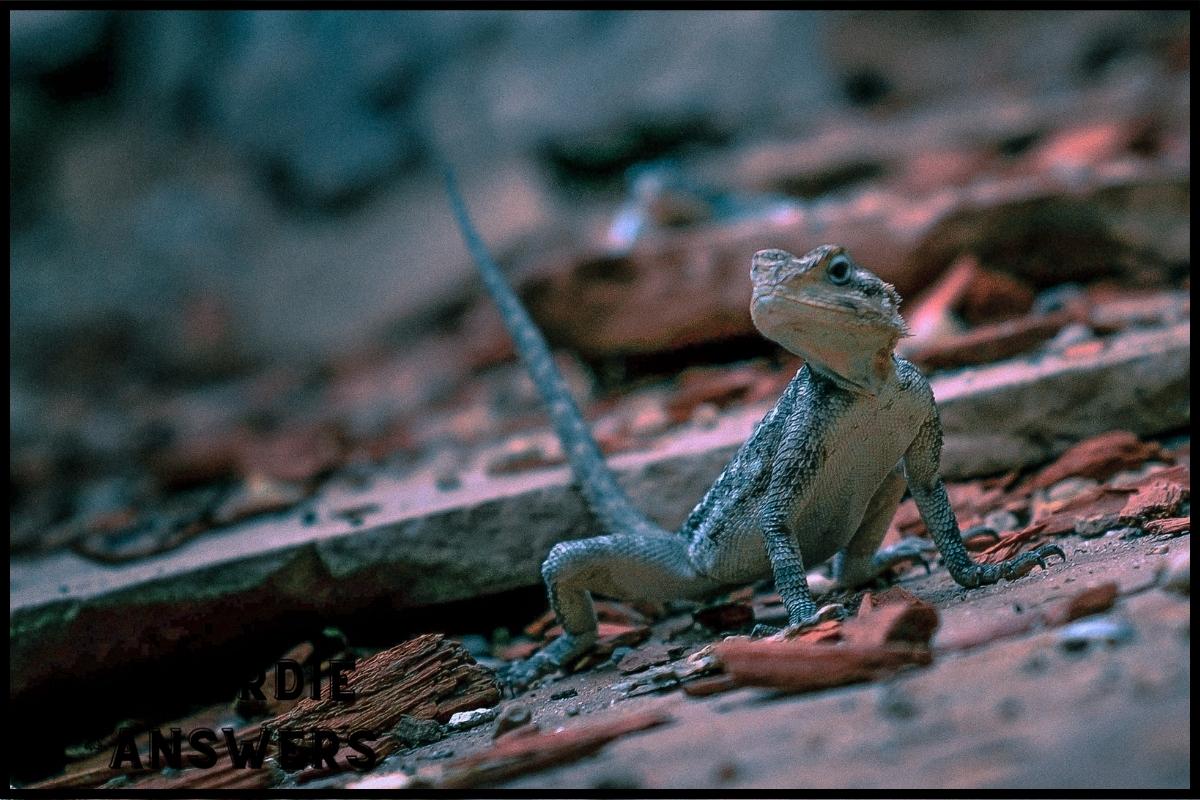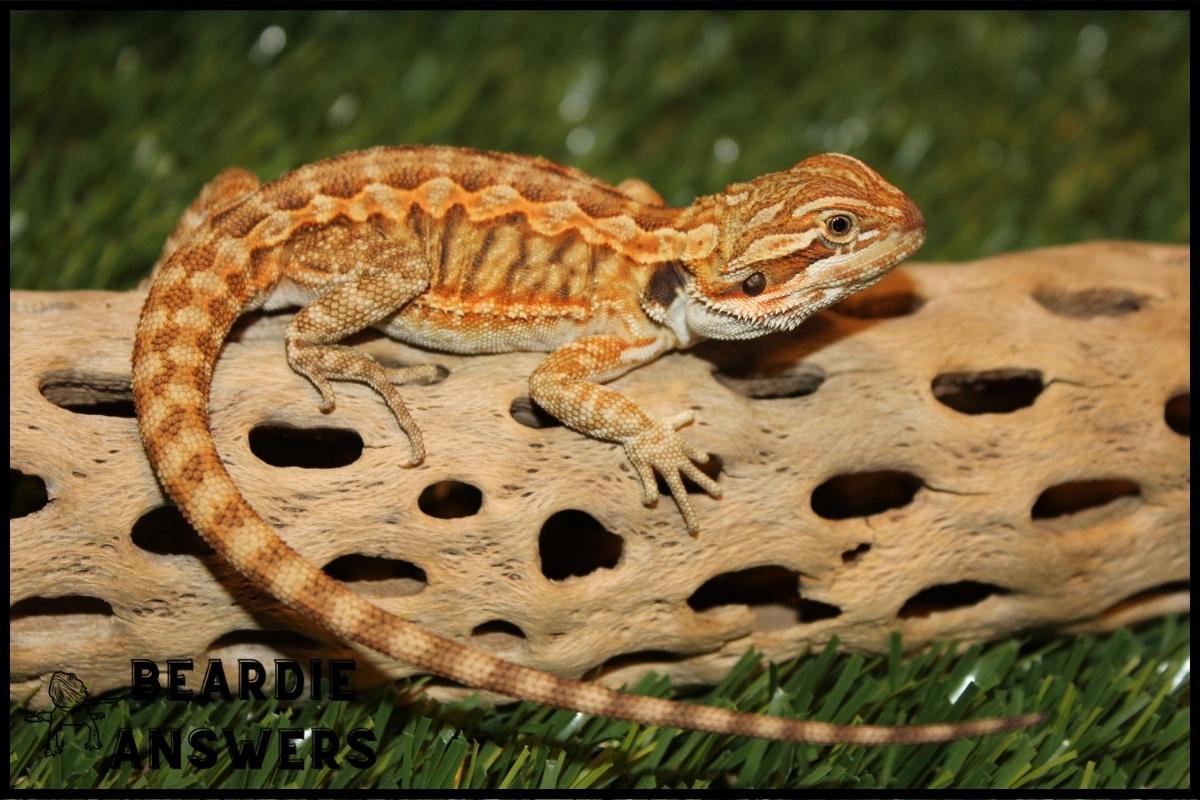Bearded dragons may open their mouth for a variety of reasons, including to regulate their body temperature or to communicate aggression. They may also yawn or stretch to signal relaxation. Observing their body language and behavior can help pet owners better understand their bearded dragon’s needs and moods.
What You'll Learn
Thermoregulation
Bearded dragons often open their mouths in order to regulate their body temperature. Through this process, known as thermoregulation, they can create thermal gradients that allow them to adjust the temperature of their environment. By opening their mouth and exposing themselves to air currents, they are able to absorb heat or cool off depending on what is needed.
This technique allows bearded dragons to maintain optimal temperatures for digestion and other metabolic activities. This behavior is important because it helps them survive in environments with extreme temperatures by keeping them from getting too cold or hot. It also gives them an advantage over predators who cannot regulate their own temperatures so easily.
These lizards have adapted a clever way of managing their internal systems through thermoregulation by taking full advantage of external factors like sunlight and breeze. By doing so, bearded dragons can optimize energy expenditure while ensuring maximum efficiency when it comes to regulating their body temperature.
With these capabilities, they thrive even in difficult climates and habitats. Moving forward, let’s look at how bearded dragons use their mouths for communication purposes – specifically aggression.
Communicating Aggression
Bearded dragons may also use their mouths to communicate aggression. While thermoregulation helps them regulate their body temperature, opening their mouths is one of the many ways they show territorial behavior and mating displays. This type of posturing is a way for bearded dragons to interact with each other in order to display dominance or submission when encountering another dragon.
Often times this posturing includes head bobbing, arm waving, and gaping (opening their mouth). Males will often become very active during mating season by displaying these behaviors as a method of courting potential mates. They can even puff out their beards and inflate themselves to look bigger when competing for territory or resources within an area.
In addition, beardies can open their mouths wide to make themselves appear more intimidating than they actually are in order to ward off threats from outside predators or intruders. By using nonverbal signals such as gape-displaying, bearded dragons are able to establish social boundaries that help define relationships between individuals while establishing hierarchical positions among members within a group or population.
Through this behavior, they ensure that conflicts remain at a minimal level without having to resort to physical altercations which could potentially harm either party involved. With this said, it’s clear that communication through mouth opening plays an integral role in maintaining peace and stability amongst bearded dragons living together in close proximity.
Moving forward into the next section we will discuss how posturing is used by bearded dragons for communication purposes.
Posturing
Posturing is a common behavior among bearded dragons. A figure of speech such as ‘posture perfect’ can be used to describe how they position their bodies in response to environmental cues or basking behavior.
Bearded dragons often take up defensive postures with their mouths open, which may include raising the body and tail off the ground while arching its neck. This behavior is usually seen when a dragon feels threatened and serves as an intimidating display towards potential rivals.
A beardie’s posture also changes depending on its environment and temperature needs. For example, if it wants to warm itself up, it’ll flatten its body against surfaces that are exposed to sunlight like rocks or logs. Similarly, if trying to cool down, it will lift its head higher than usual so that air circulates around its mouth more easily.
Additionally, when exploring new territories or hunting food sources, these lizards tend to keep their heads low and sway from side-to-side in order to observe their surroundings better.
Bearded dragons may also use posturing for communication between each other; sometimes even showing affection by licking one another’s faces or entwining together in harmony! Posturing helps them understand the intentions of others; whether it’s aggression or tenderness being displayed through physical actions rather than words.
And although this behavior might seem strange at first glance, understanding why exactly your pet lizard behaves in certain ways could help you provide better care for them moving forward.
Moving into stress behaviors…
Stress
Stress can have both physical and psychological causes, and it can lead to a wide range of adverse effects.
It’s important to understand the root cause of stress and how it can affect us, so we can better manage it.
Causes Of Stress
Stress is an all-too familiar feeling that can have a major impact on our lives.
From socialization to enrichment, there are many causes of stress in bearded dragons.
One common cause is when they don’t get enough alone time and aren’t given proper opportunities for rest and relaxation.
Additionally, inadequate environmental enrichment such as not having enough hiding places or stimulating activities can also be stressful for them.
Finally, overcrowding or too much contact with other dragons can cause high levels of anxiety and distress.
Taking the time to provide plenty of mental stimulation and peace will go a long way towards keeping your reptilian friend healthy and happy.
Effects Of Stress
Stress can take its toll on bearded dragons, and it’s important to understand what kind of effects this can have.
Poor socialization and habitat quality can both be major factors in the amount of stress a dragon experiences.
For example, if they’re not given enough time with other dragons or their environment isn’t comfortable enough, they may become overly anxious.
This could lead to them being more aggressive than usual or displaying signs of fear when interacting with people or other animals.
It’s important for owners to monitor their pet closely in order to ensure that these issues don’t arise from inadequate care or environmental conditions.
Taking steps to provide proper enrichment and socialization opportunities will help keep your reptilian friend healthy and happy – something that should always be a priority!
Hunger
Bearded dragons have a voracious appetite, and it’s important to feed them the right food items in order for their gut health to remain healthy.
Here is a list of things you should consider when feeding your dragon:
- Feeding frequency: Bearded dragons should be fed daily or every other day depending on how old they are.
- Food choices: Offer variety with insects as well as vegetables and fruits like squash, collard greens, carrots, apples, and melons.
- Meal size: Adult bearded dragons can eat up to 15 crickets per meal while juveniles can take 10-12 crickets each time.
- Gut health: Always make sure that the food you provide to your dragon is free from pesticides and chemical fertilizers since these could negatively affect gut health over time.
It’s also essential to ensure proper hydration by providing fresh water daily as this helps keep the gut microbiome balanced and healthy too.
With the right nutrition and care, your bearded dragon will thrive!
As we move forward into discussing breathing and respiration techniques for bearded dragons, let us first see what kind of environment they need in order to breathe optimally.
Breathing And Respiration
Bearded dragons are fascinating creatures that have many unique behaviors. One behavior in particular is the way they use their mouths and vocalization to communicate with each other. Let’s take a look at some of the ways bearded dragons use their mouth shapes and vocalizations for communication purposes.
One interesting statistic about bearded dragon communication is that these lizards can produce more than 20 different sounds, including chirps, clicks, hisses, and rattles! This wide range of noises allows them to convey complex messages like warning or aggression.
| Mouth Shapes | Vocalizations |
|---|---|
| Chomping | Chirping |
| Wide Open | Clicks |
| Closed Lips | Hisses |
| Tongue Flicking | Rattles |
To demonstrate aggressive behavior, bearded dragons will puff out their beards and open their mouths wide while making loud clicking noises. When defending against predators or other territorial threats, bearded dragons will make short bursts of rapid-fire clicks as well as hissing noises. To signal submission to another lizard, a beardie may press its body close to the ground and tuck its chin down towards its chest while producing low-pitched chirps.
By understanding how bearded dragons express themselves vocally through various mouth shapes and tones makes it easier to identify when they are feeling threatened or displaying dominance over others. It also helps us better understand how important communication is between members of this species.
Conclusion
It’s important to remember that there’s always more than one reason why a bearded dragon might open their mouth.
It could be thermoregulation, aggression, stress or hunger among other things.
We can’t just assume it means they’re trying to communicate something every time we see them doing it.
I think the best way to learn more is to observe our own bearded dragons and investigate their behaviors further – what do they do when they open their mouth?
Does it seem like they’re trying to cool down or are they reacting differently in different situations?
Taking the time to research this theory ourselves may help us better understand our scaly friends!

Hi! My name is Bryan, I am the “one behind the words” here are BeardieAnswers.com. I believe that providing quality care and nutrition is the best way to ensure the health of your pet. Every beardie is special and deserves the best care and attention. If you have questions about your bearded dragon, please don’t hesitate to ask! View My Full Author Page




